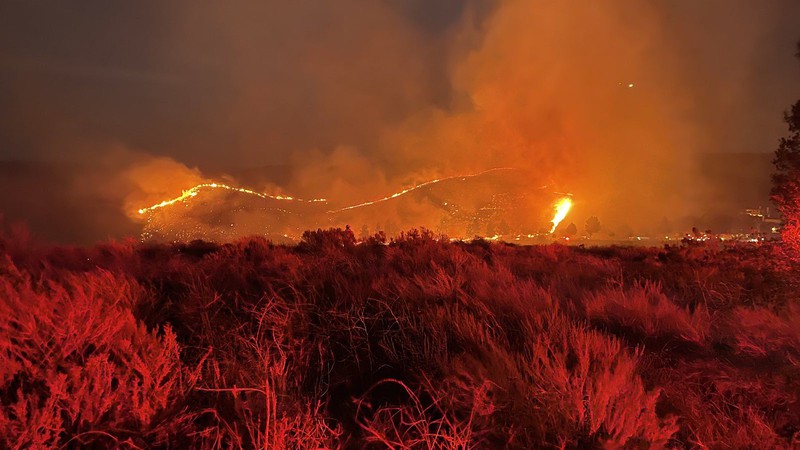
PG&E reports that a power line may have caused the 60,000-acre Dixie Fire. Ventura County Fire Department Public Information Officer Public Domain
About three weeks after the Pacific Gas and Electric company asked the state to approve a five percent annual rate hike partly to help the company improve fire protection measures, PG&E admitted that its equipment appears to be the cause of the massive Dixie Fire now burning through Butte and Plumas counties, according to a San Francisco Chronicle report by Matthias Gafni and Dominic Fracassa.
The admission came late, however. The California Public Utilities Commission requires that utility companies file an incident report within four hours of a serious electrical issue that could set off a fire, according to a Bay Area News Group story published by the Mercury News. But the PG&E report on the Dixie Fire incident was not filed with the CPUC until July 18, when the flames had already been raging for five days.
Why PG&E waited five days to file a report remains unclear. A spokesperson for the utility, Matt Nauman, told the Chronicle that the information on the report was “preliminary” and that it filed simply out of “an abundance of caution.”
Started on July 13 near the Cresta Dam in the Plumas County city of Tobin, the Dixie Fire as of July 20 had spread across nearly 60,000 acres — that’s more than 90 square miles — and had been only 15 percent contained, according to data posted by CalFire. The Dixie Fire expanded by about 20,000 acres (more than 30 square miles) just from July 19 to July 20.
The conflagration had already destroyed two structures, and was threatening some 800 more. No injuries or fatalities were reported as of the morning of July 20.
But the fire had grown so large that it was literally creating its own weather system, spewing forth a huge pyrocumulus cloud, also known as a “fire cloud” that according to the National Weather Service was “generating its own lightning.”
In Butte County, evacuation orders were issued for Jonesville and the High Lakes region, according to Cal Fire. In Plumas County, the High Lakes area, Storrie, Tobin, and Rock Creek were ordered evacuated, as were Meadow Valley, Buck Lakes and large swaths of Plumas National Forest.
So how did the enormous blaze get started? According to a filing with the state by PG&E, which also noted that its information was still preliminary, a tree leaned against one of the company’s power lines in the Feather River Canyon, blowing two fuses.
The blown fuses were found just five miles from the spot where just three years earlier wind blew a century-old PG&E power line loose, setting off the deadliest wildfire in California history: the 2018 Camp Fire, which killed 85 people.
There are about 5.3 million trees now capable of leaning or falling into PG&E power lines, according to numbers cited by former California Public Utilities Commission member Catherine Sandoval, who was quoted by the San Francisco Chronicle.
“This shows that it doesn’t matter if a tree is healthy or not,” Sandoval told Gafni and Fracassa. “Any tree that makes contact with a line creates danger.”
Read the PG&E Incident Report.
Short articles summarizing reporting by local news sources with linkbacks to the original content.